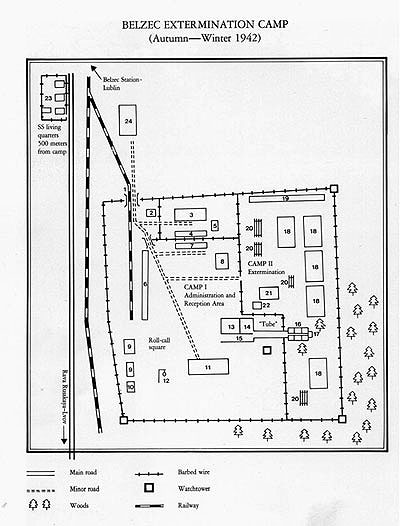https://codoh.com/library/document/the- ... -chambers/
https://codoh.com/library/document/the- ... in-a-myth/
https://holocaustencyclopedia.com/instr ... haust/266/
Because of these problems, some have backed away from the diesel claim and say it was from gasoline. The most vocal proponents of this are the HC bloggers, although some mainstream historians have also taken that position as well.
https://holocaustcontroversies.blogspot ... evant.html
https://holocaustcontroversies.blogspot ... _9432.html
https://holocaustcontroversies.blogspot ... s-why.html
https://holocaustcontroversies.blogspot ... ns-at.html
I will mainly be focusing on the Reinhard camps here, not so much on the gas vans and Chelmno, which for this I'll concede the gasoline claim for those. I just want to note here that there are some contradicting claims for the gas vans. In The People's Verdict book, diesel is claimed. Sergey also found a reference to diesel in some documents he dug up. However, there are also references to gasoline as one of the articles I linked demonstrates.
For a full treatment, I suggest reading section 8.1 point 95 of Carlo Mattogno's response, I'll just be summarizing the most important points here. If you look through the gasoline witnesses for the Reinhard camps, you'll see most of them are for Sobibor. Mattogno however concedes the gasoline issue for Sobibor calling it "old news" established by the 1966 Hagen Court. So this leaves Belzec and Treblinka.
The only 2 claimed gasoline witnesses for Belzec are Rudolf Reder and Kasimierz Czerniak.
For Reder, his earliest testimony says:
So this doesn't even describe a mass killing with the gasoline gas. So much for that testimony.The [exhaust] gas was evacuated from the engine directly into the open air, and not into the chambers.
For Czernaik, the HC bloggers claim that he said gasoline was used in the margins of a document. However, Mattogno comments:
Two of the other witnesses, Kurt Gerstein and Wilhelm Pfannenstiel, claimed Diesel. The HC bloggers tried to make it seem like Gerstein wasn't a direct witness, but this isn't true at all. Gerstein's testimony:It is unknown who the author is, but since the translation was prepared in West Germany 14 years after Czerniak made his deposition in communist Poland, it certainly was not added as a result of a remark made by Czerniak. Hence the remark was most probably added by a prosecuting judge.
As can be seen, Gerstein spent almost 3 hours with it, and he literally says he saw everything. So no, you can't get this to be hearsay. On top of that, Gerstein was an engineer. The HC bloggers make a big fuss about the experts and the ones close to it saying it was gasoline. Well Gerstein as an engineer was the biggest expert of all of the witnesses at Belzec. Going by that standard, he should be listened to above everybody. And since Pfannenstiel also claimed Diesel, he would be a "corroborating witness".Heckenholt is the driver of the Diesel […]. With the exhaust gases of his Diesel the people are supposed to be brought to death. […] But the Diesel did not function. This would happen relatively rarely, I was told – Captain Wirth arrives. One sees that it is embarrassing to him, that today of all days it has to happen when I am here. Yes, I see everything! and I wait. My stopwatch registered everything properly. 50 minutes, 70 minutes – the Diesel does not start up! […] Captain Wirth lashes the whip into the face of the Ukrainian who is supposed to help Heckenholt with the Diesel. – After 2 hours 49 minutes – the stopwatch registered everything well – the Diesel starts up!
For Treblinka, the only witness claiming gasoline is Nikolay Shalayev. Here is what he said:
Since he couldn't tell what make it was on his own, it seems to me that this testimony would not override all the other testimonies for diesel. Here are Soviet and German tank engines, it seems rather amazing to me that he wouldn't be able to tell the difference.It was an ordinary, four-cylinder engine which used gasoline and, according to the story, of the German machine operator, was of Russian make. The engine was installed on a wooden frame and started as soon as people were herded into the gas chamber rooms, whereupon the exhaust pipe was covered up and the valve of the pipe was opened, through which the exhaust entered the "bath".
https://en.wikipedia.org/wiki/Kharkiv_model_V-2
https://en.wikipedia.org/wiki/List_of_W ... ch_engines
On top of that, the skin coloration claimed (not red/pink) is more consistent with diesel than gasoline. Although the skin color issue is a whole other problem for them, so I won't dwell on that.
This means that the diesel issue is still relevant, for Belzec and Treblinka at least. Although Sobibor was the camp that killed the least of all the Reinhard camps. Why would they have the most efficient killing method for the Reinhard camp which killed the least amount, and less efficient methods for the camps that killed way more? That doesn't make any sense at all.
